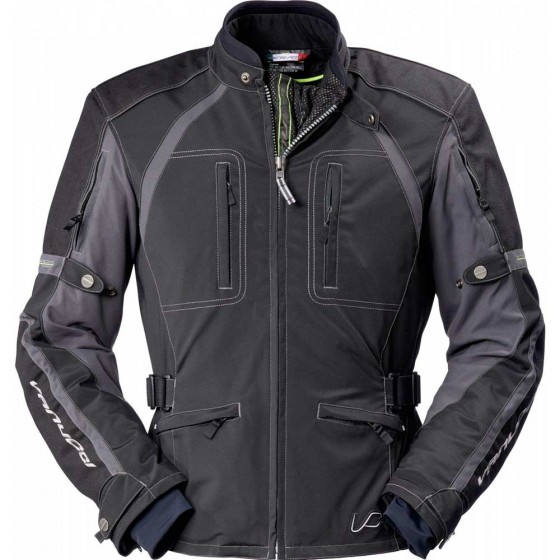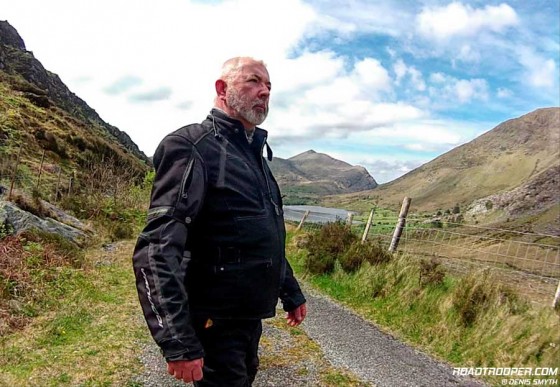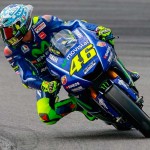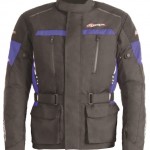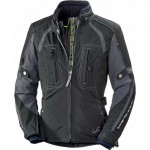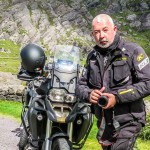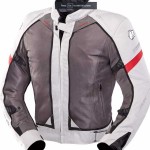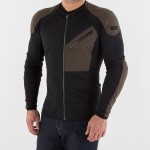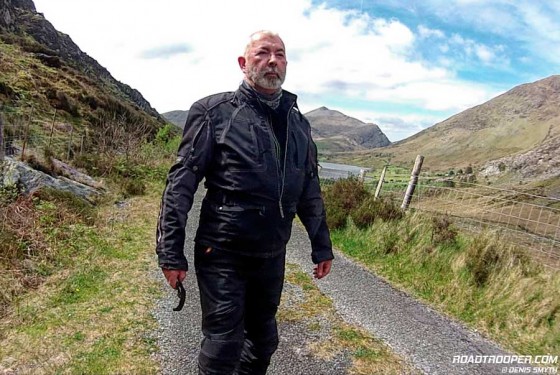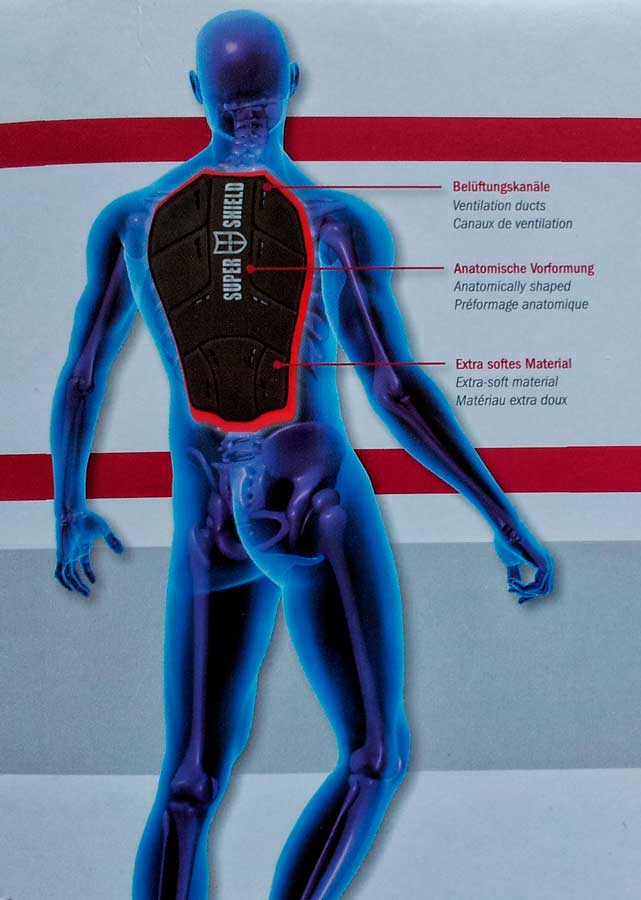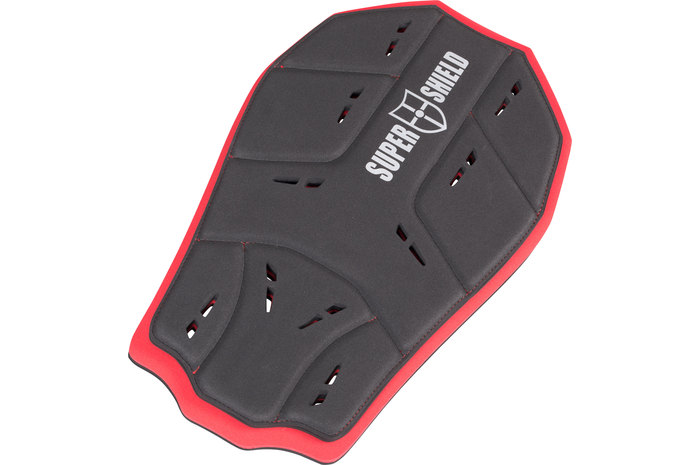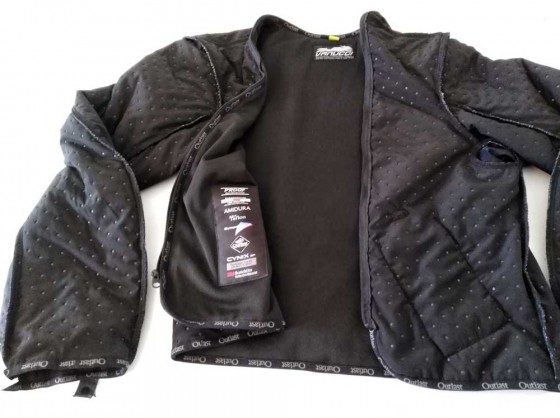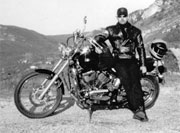Before I started this website I was a Computer Systems and Software Test Engineer where I got new software, chewed it up, figured out it’s weak points before breaking it and sending it back to the developers along with a list of suggestions to make it better. This would inevitably piss off the developers but make the shareholders happy as they’d end up with a better and more stable product and most importantly have happier customers.
In This Review
| Make | Model | Price per Jacket | Price per Pants |
| Louis Moto | Vanucci HiRider III Jacket and Pants | €450 | €350 |
Initially when Louis Moto offered to send me some gear to test and review they asked what I’d like to review to which I shyly answered one of the 3 staples if possible, boots, helmet and touring suit. I was more than a little surprised when Louis sent all 3, lid, boots and suit, let the fun begin ![]()
As for the boots I requested Vanucci Lady VTB Boots for my wife to test for the ladies for a change. The Lady VTB boots immediately became a favorite as she’s not taken them off since, so I think she liked them – a lot. The helmet came in the form of the Nishua Enduro Carbon which I absolutely love for the build quality, comfort and lightness the carbon offers, see my full review here.
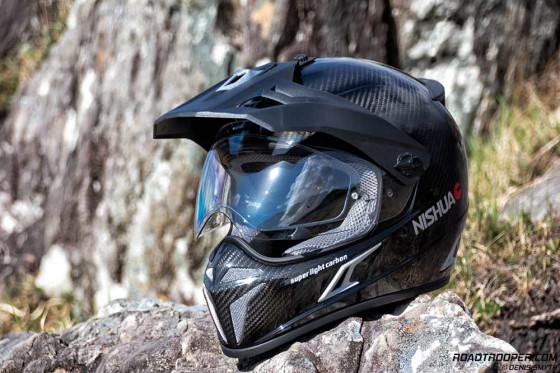 Nishua Enduro Carbon Helmet Full Review » |
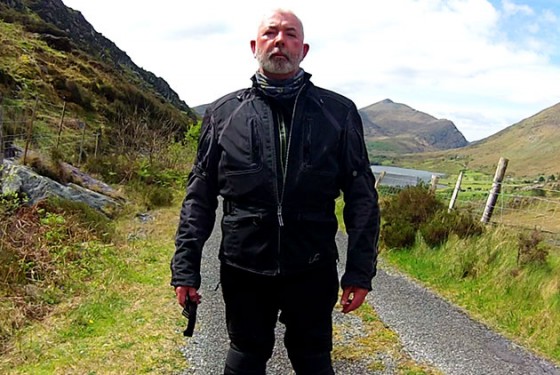 Vanucci HiRider III Suit Current Review |
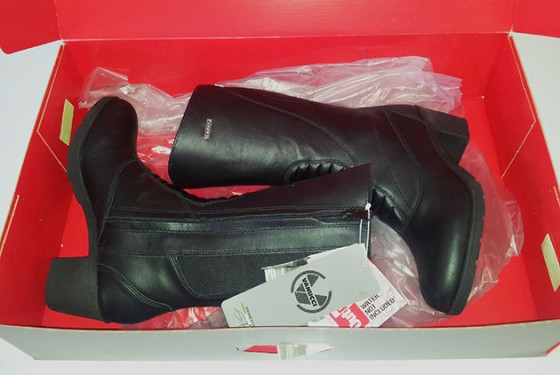 Vanucci Lady VTB Boots Review by Myra coming soon |
Vanucci HiRider III – Design and Comfort
The riding suit that’s currently on test is the Vanucci HiRider III which Louis describe as an everyday, 4 season and touring suit. Although as we all know “Touring” and “4 seasons”can be subjective terms, for example my mates in southern Spain would likely view the ideal characteristics of a 4 season touring suit quite differently to my mates in Northern Europe. Then of course there are differences of opinion on this between sport-touring riders and say the adventure/dual-sport riders. There may also be differences of opinion between riders living and riding predominantly in big cities who don’t want to look “out of place” heading to the office or cafe to those who live and ride in rural locations who may be less concerned about their looks and prioritise practicality, longevity and affordability above all else.
Then there’s the likes of me who needs a suit that works equally well on-road/off road, everyday, all 4 seasons in both the wet and windy north atlantic coast and in my second home in south east Spain. We may all be bikers, but there’s ever increasing subdivisions of us that enjoy motorcycles differently. And it’s because of our differences that manufacturers supply us with an incredible array of garments, made from different types of materials, budgets, styles and functions to suit our needs. Now that’s a good thing, but it can also be confusing shifting through the countless options, price levels and features of items like riding gear.
Few of us these days can afford to waste money, and even a budget suit is going to cost a significant amount. And in order to make the right decision we need to do 2 things, i.e. decide on the suits function and type.
There are many styles of riding suits (city, adventure, cruiser,cafe racer styles etc) but the technical aspects of most will fall into one of these category “Types” which I defined a few years back to help both myself and others choose the correct riding gear. And as you’ll see the HiRider III will fall into Type 3/City+Touring. Once you figure out which category your needs “mostly” fall into your final decision can be narrowed down by cost, style, color, sizing, etc.
So, to get a full understanding of what I mean we first need to take a quick look at my 6 main types of motorcycle suits and the styles they typically come in and see where the Vavucci HiRider III fits in.
SKIP DOWN TO HIRIDER III REVIEW »
Motorcycle Suites by Style and Purpose
Type 1: Full Leather Suit
| Overview | Pros | Cons |
| One piece race type used by track/road racers or combos use by the Harley Davidson/chrome cruiser fans. |
If well made and fitted properly with Level 2 armour leather still offers the best protection in a typical road accident, most especially the one piece race suits. At the other end of cow skin spectrum – “if the outlaw look is your gig |
Leather sucks in wet or changeable hot/cool weather, it needs proper care, it’s often impractical for touring or at least less flexible compared to textile gear. |
Type 2: Textile 3 Layer Combo
An outer protective, typically Cordoba or ballistic nylon layer with 2 removable layers, one thermal, one waterproof. This has by far been the most common system since the late 1980′s as it’s cheap to manufacture, sections can typically be generic and therefore made by different manufacturers in different countries, and so offers great value for money. As it’s cheap to manufacture most budget riding suits fit in this category.
| Overview | Pros | Cons |
| All styles, city, sports touring, adventure etc. |
You can get a really good and long lasting suit that works for almost every occasion, including winter, and summer touring at an affordable price. The inner layers need a wash every now and again which is quick and simple and the outer layer needs little care, also an easy task even for the most ham fisted. | In hot changeable weather you can develop a pain in the arse putting the layers in and out all the time. This can be a real issue while touring where you may need to keep up a good pace and regularly pissing around with waterproof layers roadside is not really an option. Another con is that these suits, especially the low priced ones usually come with a bare minimum Level 1 armour (a cheap piece of useless foam) and only scratch through EU government’s basic CE safety rating which is, to coin a phrase “total shit”. You should make sure the suit can accept Level 2 armour upgrades, and do so immediately when buying your suit, push the sales guy to throw in some upgrades to close a sale. In my view Level 1 armour is worse than no armour at all as it gives folks a false sense of security. There is a world of difference between Level 1 and Level 2 armour. |
Type 3: 2 Layer Combo System (I.e. Vanucci HiRider III)
An outer protective, typically a ballistic nylon Ripstop woven, Cordoba reinforced layer with an removable thermal layer. It does not need a removable waterproof layer as it has one permanently baked into the inside of the outer Cordoba/nylon material. This is starting to become more popular as incorporating a breathable-waterproof layer to the outer fabric has become slightly cheaper and can now be found on mid-budget suits and not just the high end stuff.
| Overview | Pros | Cons |
| All styles, city, sports touring, adventure etc. The Vanucci HiRider III is here in this category in the city/sport-touring style. |
Warm in winter, and dry 24×7 once you look after it as dirt and oil will hinder the waterproof breathable layer. | More complicated to produce than Type 2 and therefore more expensive. Another potential issue is that without good venting they tend to be a bit warmer to wear in summer. Like all gear with a baked in Gore Tex or similar liner regular and proper care is needed cleaning them or the outer layer will soak up rain. You will/should stay dry, but if the outer material above the waterproof layer soaks water the garment gets heavy, uncomfortable, and can draw heat away from your body. |
Type 4: The Shell Suit
This is a heavy duty, one layer system as in my Klim Badlands which is an adventure style Pro Shell three-layer laminate textile composite material, i.e. a Ripstop woven Cordoba & Kevlar outer material with a GORE-TEX PRO breathable membrane sandwiched between the outer and an inner liner. There is no detachable thermal layer, you need to sort this out yourself if needed.
| Overview | Pros | Cons |
| All styles, city, sports touring, adventure etc. |
It’s a similar setup to Type 3 except it’s military grade with the inclusion of kevlar and/or superfabric suggesting it will survive multiple low impacts and possibly even a mid speed impact or two. So in theory, while you might not survive a spill the suit should. If you’re smart with your cool/cold/warm/hot layering choices this type of suit is technically suitable for all conditions and long term heavy duty use. Another key feature is they have multiple, waterproof and large direct-to-skin venting systems to give relief on hot days. Because of this they can be incredibly versatile in extremely diverse situations and weather conditions. It’s a one suit for all occasions (if you choose the right layering additions) and this for good reason is what many riders planning a round the world, all road/no road bike tour will go for. | Because of everything I’ve just said they are really, really expensive, more than twice the price of a Type 3 system, and 3 times the price of a Type 2. Like all gear with a baked in Gore Tex or similar liner regular and proper care is needed cleaning them or the outer layer will soak up rain. They also tend to be very heavy and come with a kidney belt to help take the weight or them off your shoulders. I took a very long time to decide that this category 4 level was right for me. |
Type 5: Mesh
Usually combined with either leather or textile to give both protection and massive airflow.
| Overview | Pros | Cons |
| Affordable, versatile and excellent for hot weather riding, especially for summer city riding. | Well obviously it’s going to be a poor choice for a nordic winter. All or mostly mesh gear is poorly rated in mid to high speed accidents as it’s often not nearly as strong as Cordoba, ballistic nylon or leather. All or mostly mesh gear is also a poor choice for very hot weather distance riding, mesh will keep you cooler by pulling heat via sweat away from your skin. On a short ride that’s fine, but beware – you may not notice yourself becoming dangerously dehydrated until it’s too late! |
Type 6: Separate Layering & Armour Systems
First used in the trial riding circuit where the armour is worn separately to everything else ensuring it’s in the right place when you need it. KNOX are one of the main players in this area today and have taken the concept to a new level for all rider types. Basically it’s a 2-3 ad hoc layer system where you wear a wickable layer holding the armour in place, a separate thermal layer under or above that (if needed) then your jacket, e.g. street/wax/leather/what-ever-ye-like and pants, e.g. armoured jeans combo which will likely be waterproof/windproof or at the very least abrasion resistant. I love the concept of what KNOX are doing these days with separate armour and city style jackets that do not look like conventional biker gear. It does not really suit me or my type of riding as it’s really aimed at city motorcycle & scooter riders, but I still appreciate the concept.
| Overview | Pros | Cons |
| Wonderfully versatile and can suit every occasion. | Initially a little expensive but otherwise few downsides other than having to wash the armour layer garments often. |
Each category has its place, each has it’s pros and cons and it’s for very good reasons that the vast majority of riders will be looking for suits in the Type 2 or Type 3 range.
So now I hope you have a solid understanding of why the Vanucci HiRider comes in at my Type 3 level and why it’s in the mid level price range.
The actual Vanucci HiRider III suit review – and about fecken time 
So what do I think now that I’ve had a solid 3 seasons with this suit? In many ways I absolutely love it, it’s surprised me and surpassed my expectations, but with the scene set let’s have a closer look at the suit to dig out the pros and cons.
Product Review by Louis
Motorcycle gear that you can wear all year round is growing in popularity. The Vanucci HiRider III was designed with this trend in mind. What’s more, the jacket is made of a slightly elastic material, making it extremely comfortable to wear. The close fit and outstanding features make this the perfect choice both for touring and for daily motorcycle riding…
Vanucci HiRider III Textile Jacket
Comfort/Features:
- Breathable, wind-and waterproof SympaTex lining laminate, 100% polyester
- Detachable lining made of temperature-regulating Outlast fabric, combined with Cynix plus DuPont Classic ComfortMax thermal padding, 100% polyester
- Stretch panels on the elbows
- Air vent system on the upper sleeves and the front and back
- Adjustable waist and sleeves
- All-round and short connection zipper
- High comfort collar with soft edge
- Shoulders and elbows reinforced with 1000D CORDURA, 100% polyamide
- 3 Outside pockets (non waterproof)
- 2 Inside pockets + 1 phone pocket
Protection:
- Removable SUPER SHIELD HTP shoulder and elbow protectors
- Elbow protectors individually positionable by means of fleece insert
- 3M Scotchlite Reflective Material
- ISO 4916 safety seams at the impact points
- Optional: SUPER SHIELD HTP Back Protector can be retrofitted (size 48-50: 20895603 or 20895604, size 52-56: 20895604 or 20895605, size 58: 20895605 or 20895606) can be retrofitted
Material:
- Elastic, abrasion-resistant 500D AMIDURA, 95% polyamide, 5% polyurethane
- Fixed mesh lining, 100% polyester
- Additional dirt-repellent Teflon finish
Vanucci HiRider III Textile Pants
Comfort/features:
- Breathable, wind-and waterproof SympaTex lining laminate, 100% polyester
- Detachable lining made of temperature-regulating Cynix plus DuPont Classic ComfortMax thermal padding, 100% polyester
- Stretch panels on the knees and seat
- Air vent system on the upper legs plus perforation at the back of the knees
- Adjustable waistband and ankle
- All-round and short connection zipper
- Anti-slip material on the seat
- Anti-slip tape on the inside of the hem
- Double layer of material on the knees
- Seat reinforced with 600D COSATEC, 100% polyester
- 2 Outside pockets (not waterproof)
Protection:
- Removable SUPER SHIELD HTP knee and hip protectors
- Knee protectors individually positionable by means of fleece insert
- 3M Scotchlite Reflective Material
- ISO 4916 safety seams at the impact points
Material:
- Elastic, abrasion-resistant 500D AMIDURA, 95% polyamide, 5% polyurethane
- Fixed mesh lining, 100% polyester
- Additional dirt-repellent Teflon finish
OK, so this is pitched as an all day comfortable, 4 season suit that’s touring capable priced at €450 for the jacket and €350 for the pants. And as it’s got a wind-and waterproof SympaTex lining laminate permanently attached (2 layer system) and features Level 2 armour this puts it squarely in my Type 3 level and by the look of it it’s in the City style, i.e. clean lines, smart/modern looking, conservative color scheme, fairly conservative branding and lack of boxy multiple cargo/storage pockets.
First off, let’s look at what I view as the 3 most important things when looking at a riding suit that’s designed for year round daily wear as well as touring capability.
Safety Protection
Both the jacket and pants come with Removable SUPER SHIELD HTP protection in the key areas, shoulders, elbows, knees and hips although the Super Shield HTP back protector must be bought separately as it’s not a one size fits all item.The Super Shield HTP protectors have a Level 2 rating and are fantastically light and comfortable. I’ve got ForceField Grid, D30, BMW, Knox and Rev’it’s Seeflex armour inserts in my armory, but up ‘till now I’d never heard of Super Shield to be honest. To date the ForceField Grid and now the Super Shield armour is by far my favorite as it feels like you’re wearing no armour at all it’s so light and comfortable. It’s so comfortable in fact I’ve now replaced the D30 inserts in my Klim Badlands gear with the Super Shield L2. For me it’s a key quality for all day comfort especially as I’ll not even consider wearing Level 1 armour. So Louis gets top marks from me for using Super Shield HTP in the HiRider III. (Remember though you need to buy the back protector separately)
The suit is also fairly tight fitting in the typically euro style, this also gives the armour the major benefit in an accident of staying in the right place at all times.
The armour on the knees of my Badlands were never in the right place and absolutely failed in that respect, but then again the pants were designed to allow room for proper separate off-road knee brace/armour. Other safety features include ISO 4916 safety seams as well as 1000D Cordoba at the impact points of the abrasion-resistant 500D AMIDURA fabric of the suit. So when it comes to safety or accident protection I’d feel confident that the HiRider is going to give a good level of protection.Weather Protection
 Vanucci HiRider III Review |
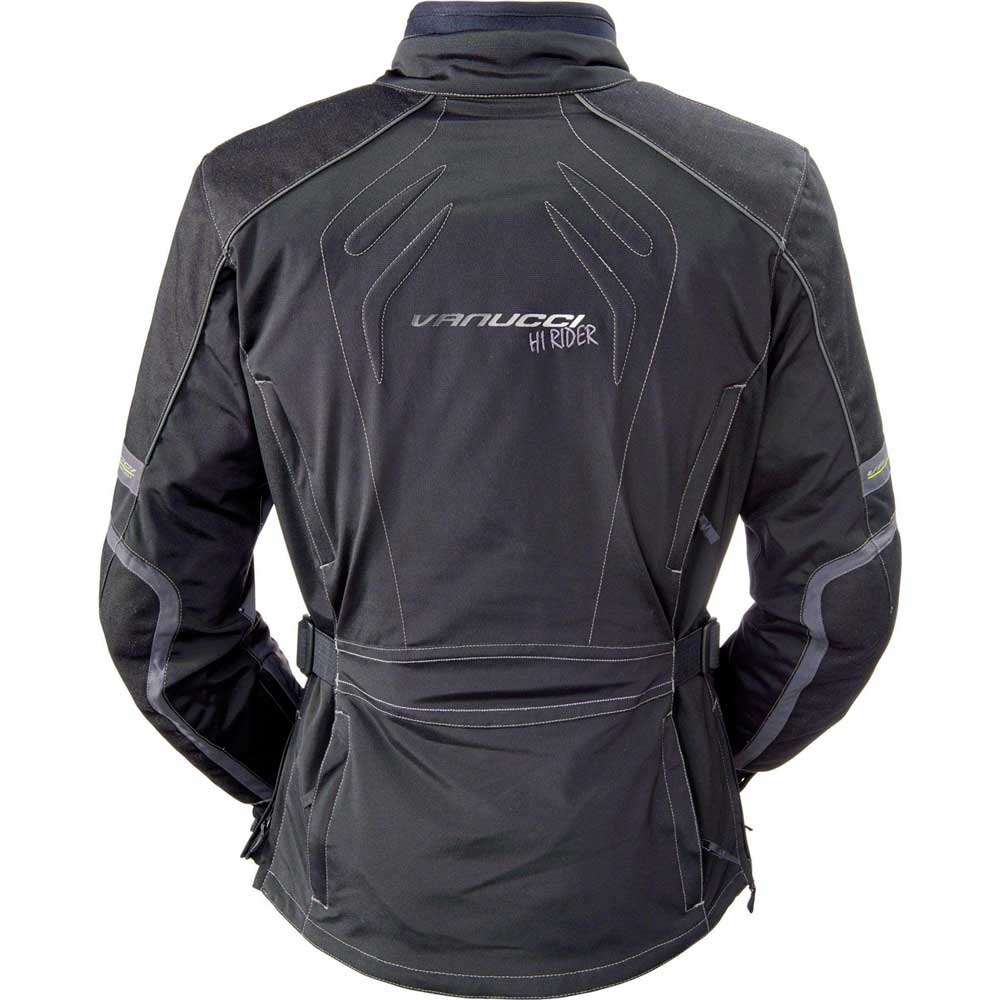 Vanucci HiRider III Jacket – Back |
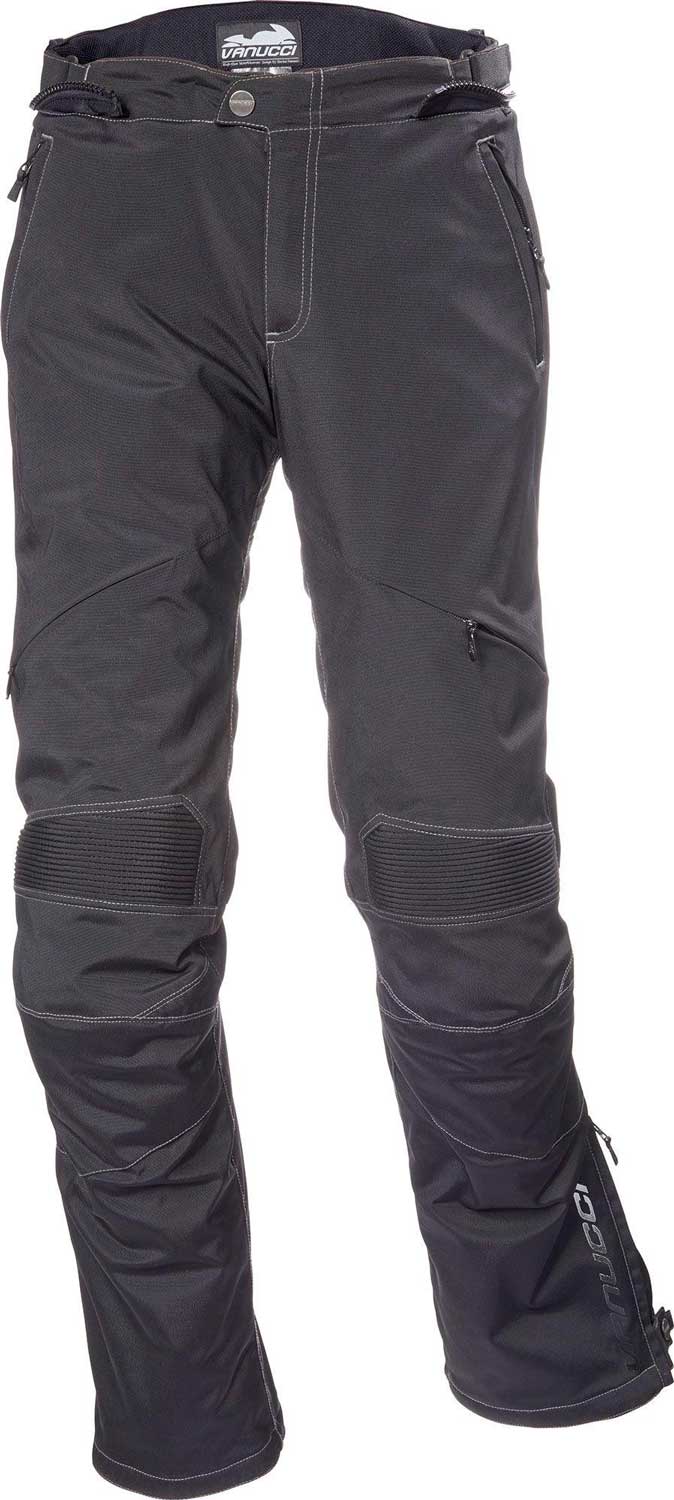 Vanucci HiRider III Pants |
It’s important to point out again that the jacket and pants are a 2 layer system. Most touring suits have a 3 layer (Type 2) system, typically an outer Cordoba reinforced ballistic nylon layer holding the armour, then 2 removable liners, one waterproof and one thermal.
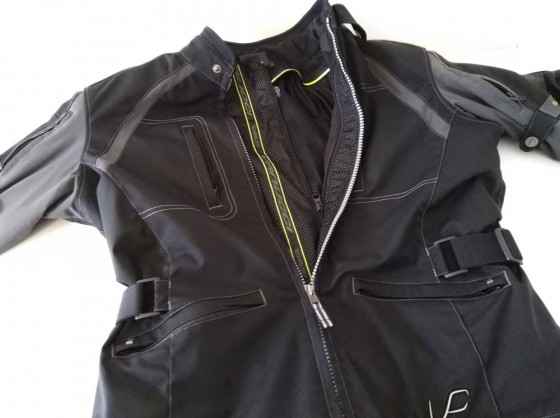
The outer zip is not waterproof but there is an internal zipped waterproof rain gutter, once this is closed you’ll be watertight..
Hot weather is where the suit fails for me and life in this gear starts becoming uncomfortable above 18C, the Outlast fabric has it’s cooling limitations so unless it’s well below 18 degrees C I don’t use the inner layer. If it’s sunny and 22C I just find the suit uncomfortable with the lack of venting. Everyone’s tolerance levels for heat and cold can vary greatly. The cold doesn’t bother me, much to the annoyance of my wife when I immediately open the windows as soon as she lights the living room fire, nor can I sleep without the bedroom window open even in deep winter.
The HiRider III has 2 small zip opening vents in the upper chest, arms and back but due to the design they don’t open wide enough to allow any real airflow. It’s the same in the legs. Opening the front of the jacket helps but I don’t like opening up a jacket by it’s main closing zip too much as opening the main zip more than a 3rd of the way down severely compromises any suits ability to protect you, a bit like putting on a helmet but not fastening the chin strap. Don’t think that the lack of big venting is unique to the HiRider III as it’s common in a lot of gear in all price ranges and types (except mesh gear). For example I don’t think Rukka even know what venting is and for folks like me with overclocked internal heating systems good venting for summer is a priority.
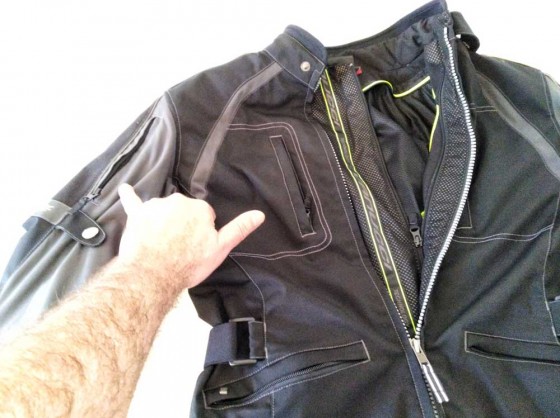
Even when open the chest and arm vents don’t open very much so airflow through the jacket is very limited.
So for me in cold, cool and warm weather the HiRider III is really excellent. But with my low tolerance to heat I can’t use it in hot weather. I’d consider temperatures above 18C hot, and 25C intolerable while my Spanish mates further south will consider that winter and will likely be wearing a jumper and thermals
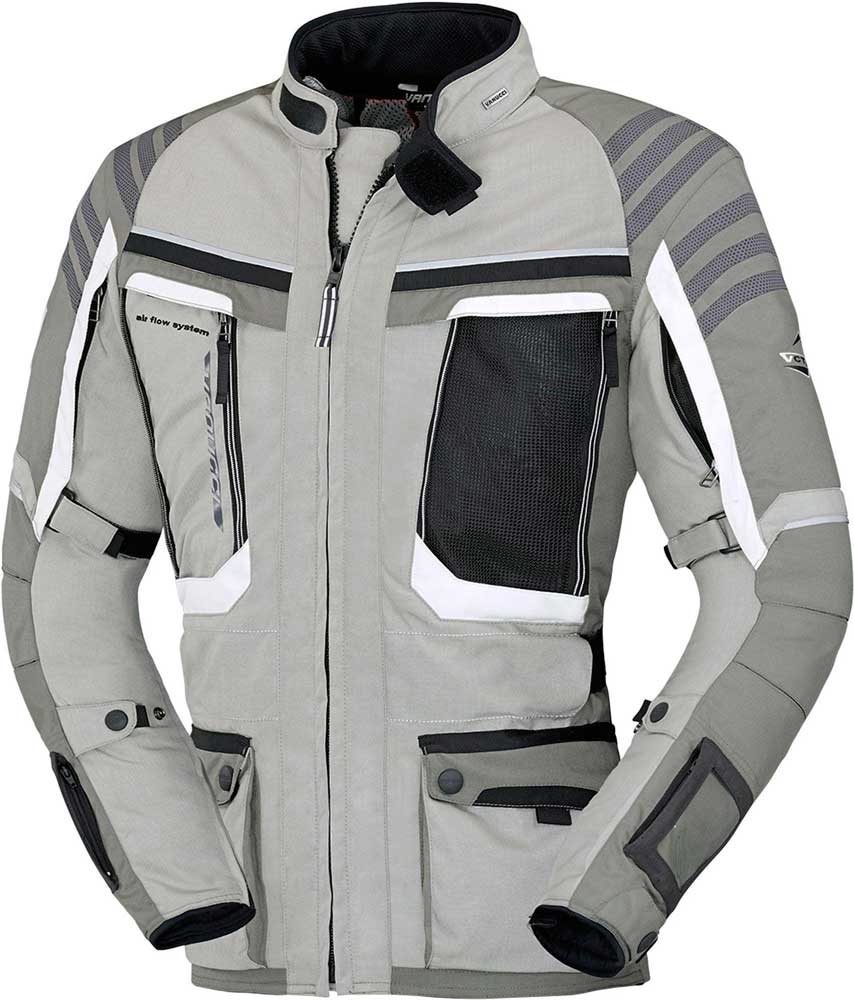
Panel vents (indirect vents) on the Vanucci Tanami II textile jacket €250 (www.louis.ie)
For this reason, from my hot blooded point of view I’d personally consider the HighRider III a 3 season, cool weather suit. And I would honestly have a hard time thinking anyone living in southern Europe being able to use this suit in summer. If Louis were to include larger arm vents, under/armpit vents and chest/thigh venting panels then I think it would be a perfect 4 season suit. Remember though, my personal default body temperature is set on high so venting is high on my wish list for any suit. On the other hand those in northern Europe could easily live with this suit all 4 seasons as it is.
All Day Comfort
The HiRider is supremely comfortable and I really can’t stress that enough. Here both jacket and pants are outstanding. I’d easily get a good night’s sleep while wearing this suit, eh, in the winter of course ![]() If you read again in the description Louis Moto gives us, “Elastic, abrasion-resistant 500D material”, “Stretch Panels” and “High Comfort Collar” and you’ll see where I’m going. These features make a difference, my Badlands is a very different ball game, on the comfort subject it’s like comparing Klims industrial strength sackcloth to Louis’s beautifully comfortable Vanucci silk. Wearing the Badlands is a necessity while the HiRider is a pleasure. Then there is the tailoring and cut that somehow manages to make it near impossible to tell you are wearing Level 2 armour. When I wear the Badlands I’m conscious of it at all times, not so with the HiRider where I can simply forget I’m wearing it and just get on with my day without thinking about it until I get home.
If you read again in the description Louis Moto gives us, “Elastic, abrasion-resistant 500D material”, “Stretch Panels” and “High Comfort Collar” and you’ll see where I’m going. These features make a difference, my Badlands is a very different ball game, on the comfort subject it’s like comparing Klims industrial strength sackcloth to Louis’s beautifully comfortable Vanucci silk. Wearing the Badlands is a necessity while the HiRider is a pleasure. Then there is the tailoring and cut that somehow manages to make it near impossible to tell you are wearing Level 2 armour. When I wear the Badlands I’m conscious of it at all times, not so with the HiRider where I can simply forget I’m wearing it and just get on with my day without thinking about it until I get home.
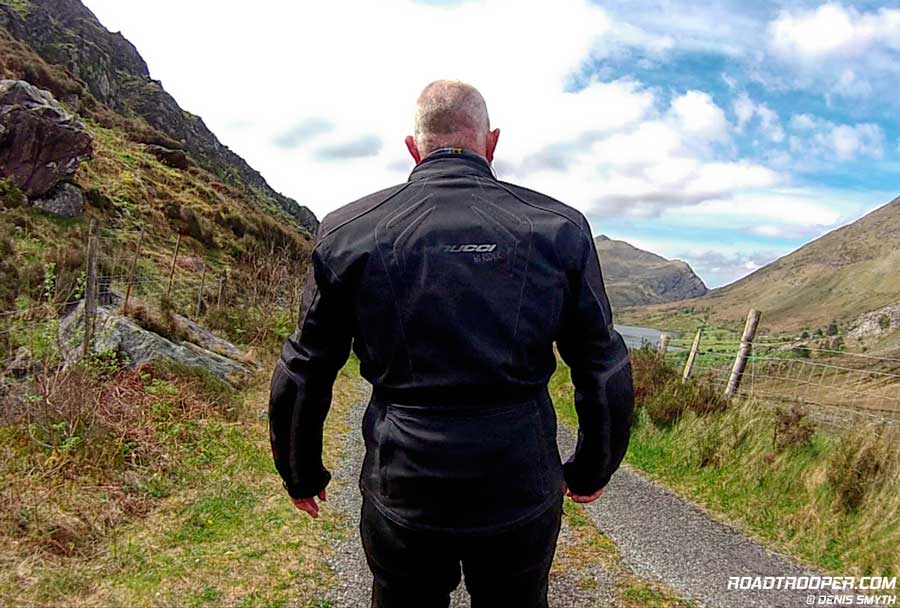
Vanucci HiRider III
Pockets
There are two waterproof pockets on the inside of the jacket neatly tucked away and would be hard to find except for the dayglow yellow-green fabric tags on the zippers which make them easy to find and access. There’s also 2 zipped side pockets and a zipped pocket at the lower rear. As for the rear pocket though I can’t figure out what it might be used for, it’s not waterproof so it’s no good for most things and it’s too small to fit waterproofs or even a map which is typically what I’d use a back pouch for.
The rim around the zippers for the removable thermal linings on both pants and jacket have the same bright dayglow material as the inner pocket zips making them easy to get on and off.
The waist adjuster on the pants is very good, between that and the stretchy nature of the Cordoba on the waist these pants do a magical job of catering for my “slight” beer belly. The pants also weigh half what my Klim pants weigh which is another reason I like wearing them so much.
What about touring?
Well again that depends on what your definition of touring is, how much of it you do and of course when and how far south or north you venture. You don’t need an adv bike like the GS to tour Europe, you can do it on an old Honda C90 if you prefer, but you’ll need to accept some compromises and realities.
If I was to head up the coast for a few days, a long week end or even a week then I’d happily, and comfortably do it in the HiRider III. But if it’s a 4 to 6 week jaunt across Europe then for me I’d find the HiRider Suit limiting on the pockets:
Verdict
If I were to describe the HiRider III in a sentence I think it would be this.
An extremely comfortable, snug fitting, 3 season/cool weather riding suit loaded with many nice features, including Level 2 armour and Outlast liners that’s perfect for cool to cold weather riding and light touring.
A quick note on sizing. It fits true to the size advertised so you should have no problems if you fit into the sizing brackets the suit is available in. And don’t forget the material is stretchy around the waist and shoulders. It’s also available is sizes for women.
Stay Safe,
Denis
